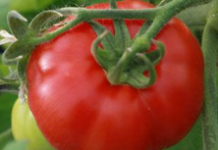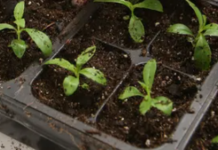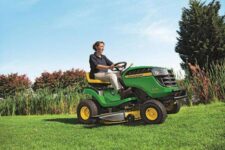- Weeks 1-4: To avoid injury to lawns, keep foot traffic to a minimum when soils are wet or frozen.
- Weeks 1-4: When sowing seeds indoors, be sure to use sterile soil mediums to prevent diseases. As soon as seeds sprout, provide ample light to encourage stocky growth.
- Weeks 1-4: Repot any root-bound house plants now before vigorous growth occurs. Choose a new container that is only 1 or 2 inches larger in diameter than the old pot.
- Weeks 1-4: To extend the vase life of cut flowers you should: 1. – Recut stems underwater with a sharp knife. 2. – Remove any stem foliage that would be underwater. 3. – Use a commercial flower preservative. 4. – Display flowers in a cool spot, away from direct sunlight.
- Weeks 1-2: Now is a good time to learn to identify trees by their winter twigs and buds.
- Weeks 1-2: Branches of pussy willow, quince, crabapple, forsythia, pear and flowering cherry may be forced indoors. Place cut stems in a vase of water and change the water every 4 days.
- Weeks 2-4: Watch for squirrels feeding on the tender, swollen buds of Elms, Hickories, Oaks and other trees as spring approaches.
- Weeks 2-4: Maple sugaring time is here! Freezing nights and mild days make the sap flow.
- Weeks 2-4: Begin to fertilize house plants as they show signs of new growth. Plants that are still resting should receive no fertilizers yet.
- Weeks 3-4: Now is a good time to apply appropriate sprays for the control of lawn weeds such as chickweed and dandelion.
- Weeks 3-4: Tall and leggy house plants such as dracaena, dieffenbachia and rubber plants may be air layered now.
- Weeks 3-4: Save grape vine prunings for making into attractive wreaths and other craft objects.
- Week 4: Late winter storms often bury birds’ natural food supplies and a well stocked feeding station will provide a life-giving haven for our feathered friends.
- Week 4: Encourage birds to nest in your yard by providing water and by putting up bird houses. Planting suitable shrubs, trees, vines and evergreens will provide wild food sources and nesting habitat.
Gardening Calendar supplied by the staff of the William T. Kemper Center for Home Gardening located at the Missouri Botanical Garden in St. Louis, Missouri.(www.GardeningHelp.org)



